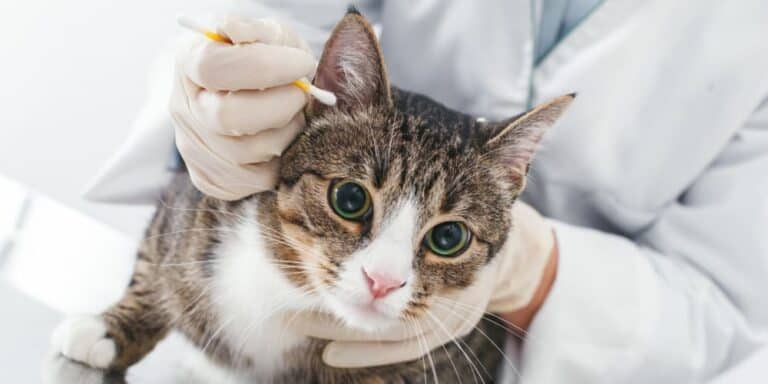Table of Content
All you need to follow those 5 effective ways to get rid of mites in rabbit with home remedies I stated earlier, the mites will be surely gone. Following application, your rabbit will do a lot of head shaking and grooming…and look at you rather irritably. As she does this, mites will go flying - hence, why it’s a good idea to keep her in a temporary hutch.

If you notice symptoms again, call a veterinarian for cage checking and sanitation. Follow the advice given and ask for another way of medication. Change the beddings of your rabbit regularly and replace them with fresh ones. Don’t forget to keep the environment clean while your rabbit is treated. Specifically, it’s the lauric acid in coconut oil which makes up nearly 50% of the fatty acids, that fights harmful microorganisms. Ear mites are very contagious and are spread through direct and indirect contact with an infected rabbit.
Ear Mites: Care information for your Rabbit – Vet Help Direct
If your rabbit is scratching excessively, have it looked at by a veterinarian. Repeat the treatment as directed until the mites are gone. While your vet will likely give your rabbit its first treatment, it will be your responsibility to continue treatment for several weeks. This will entail applying the anti-parasitic that your veterinarian has prescribed and watching the infection for signs that it is dissipating.
Be careful and apply gently away from tender areas of the ear. If you are using petroleum jelly, it’s a good idea to wear gloves while you apply it. This will allow you to keep your fingers clean and you will not come into contact with the scabs.
Timothy Hay for Rabbits
The nymphs then mature into adults, which mate and lay eggs of their own. Rabbit ear mites can live for up to four months on a single host. However, they will eventually die if they do not have access to a blood meal. If you notice the symptoms of ear mites in rabbits, you want to get your rabbit treated as soon as possible. With the proper care and medication, you can easily get rid of ear mites and help your rabbit return to health. However, if you ignore the signs, the infestation can cause severe damage and health consequences.
Ear mites are tiny parasites that live in the ear canals of rabbits and other animals. These mites feed on the wax and oils in the ears, causing irritation and inflammation. If left untreated, ear mites can cause serious damage to the rabbit’s ear canal and even lead to deafness. The good news is that ear mites are easy to treat with medication prescribed by a veterinarian. The most common treatment is an insecticide that is applied to the inside of the rabbit’s ear. With prompt treatment, ear mites can be effectively controlled and your bunny can enjoy good health.
Rabbit ear mites ivermectin treatment
Ear mites can fall off the rabbit and live in the surrounding environment for 21 days. For some cases, stress can trigger the ear mites infection. Just remember to keep the environment of your rabbits stress-free. Of course, cleanliness and hygiene holds a very great deal, too.

I will remind you again that you need to be careful and do it gently to avoid your rabbit becomes stress. If you force to remove scale, it will hurt your rabbit. Or anything else that you use for grooming your infected rabbit. Some of people suggest to take the infected rabbit to bathe regulary, but some don’t.
About This Article
Dilute a little vinegar into water and apply it to the rabbit’s ear. Use a cotton ball or a soft cloth to apply the mixture. Almond oil is a good source for curing such infections. Using the dropper bottle, apply it on the infected area and gently spread it with cotton. After the first course, allow a gap of three days and resume the course for 6 weeks. Almond oil helps in curing and enhances the process of healing.

People cannot contract the disease but can transmit it by carrying mites or eggs on hands or clothes after handling infected rabbits. Common treatments include injections of ivermectin, or topical spot-on products such as selamectin or imidocloprid/moxidectin (Advantage-Multi). Several treatments are usually needed to eliminate infestation. Cleaning of the environment and treating all in-contact pets is critical for treatment success. If a topical treatment doesn't work for your rabbit, then your veterinarian may suggest a lime sulfur dip or an injection of ivermectin directly into the skin.
Mites are a parasite that can infect your rabbit's ears or skin. They can cause itching and infection for your rabbit and cannot be seen with the naked eye. Because of this, it is important to keep an eye out for the symptoms of a mite infection and use a combination of at-home and veterinary methods to get rid of them. We never had even one instance of ear mites when we raised rabbits. We always kept our rabbits very clean, and with a good diet, consisting of alfalfa hay, pellets, and sometime, for a treat, all-grain. We also gave them lamb’s quarters and other wild greens, which they consumed with gusto.

I grow about half of the food for the caged rabbits. I also have rabbits in tractors that get maybe 60% – 90% of their food from the lawn they are moved over. I have some colony rabbit experiments which are eating about 60%-90% of their food from the small green paddocks there – it’s still very experimental. I am also working with an area where I am creating habitat for wild rabbits and are 100% feeding themselves for what I’ve encouraged to grow.

No comments:
Post a Comment